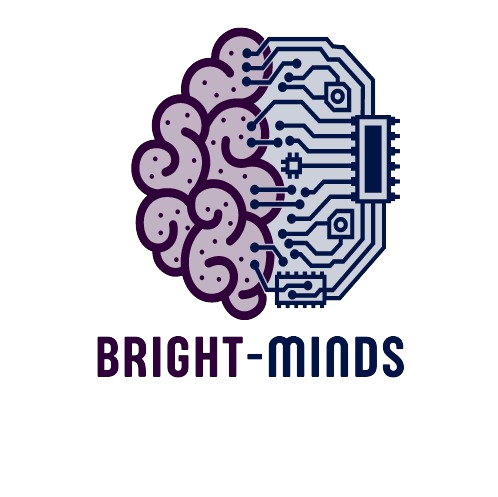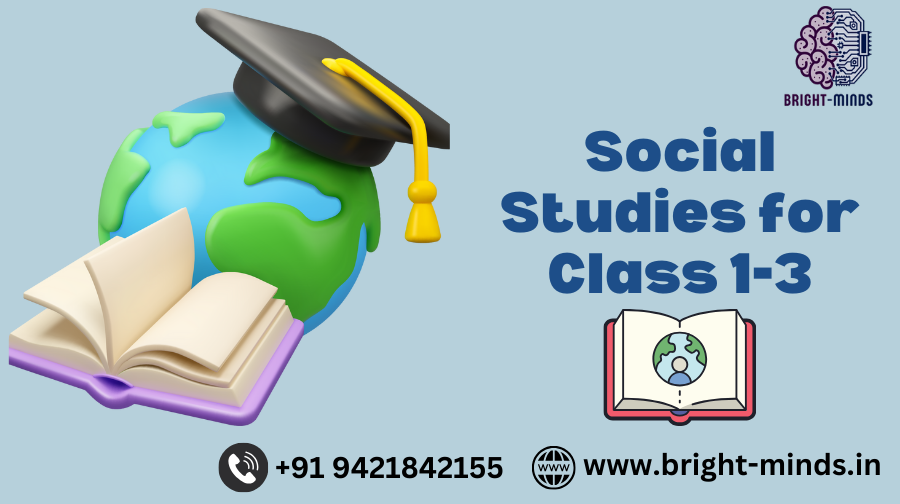
Explore Social Studies for Class 1-3 Learn about community, family, maps, and local history. Engaging lessons to build understanding of the world around them
Social Studies for young learners in classes 1-3 serves as an essential introduction to the world around them, helping to foster a sense of community, understanding of geography, and an appreciation of local history and culture. At this stage, social studies is about making connections with the child’s immediate environment and gradually expanding their knowledge to include broader concepts.
Basic Concepts of Community and Family
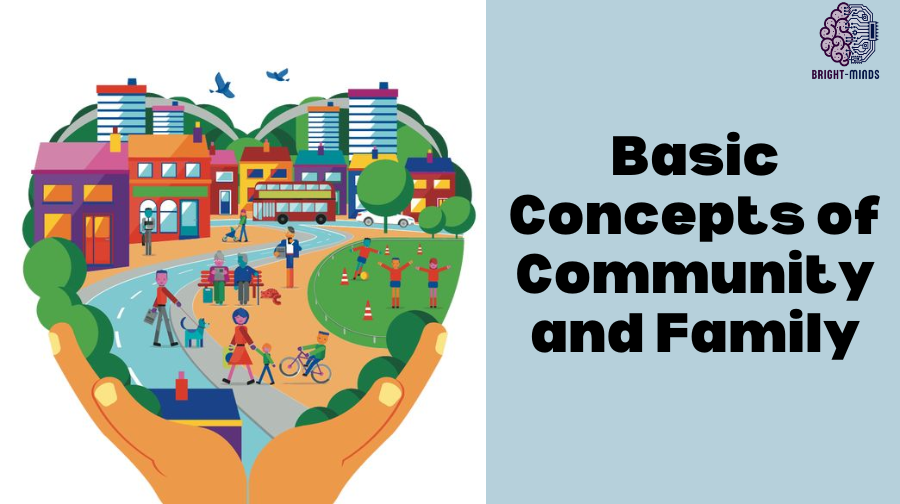
The study of community and family is often the starting point in social studies for young children. It helps them understand their role in society and the importance of relationships.
- Understanding Family:
- Types of Families: Children learn about different types of families, such as nuclear, extended, and single-parent families. They explore how families function, the roles of family members, and the importance of love, care, and support within a family unit.
- Activities: Drawing family trees, sharing family traditions, and discussing the roles of different family members can help children connect with the concept of family on a personal level.
- Exploring Community:
- What is a Community?: A community is a group of people living in a specific area who share common values, responsibilities, and goals. Children learn about various community helpers such as doctors, teachers, police officers, and firefighters, who play essential roles in maintaining the well-being of the community.
- Activities: Visits to local community centers, role-playing community helpers, and participating in community events can help students understand the significance of living in a community.
- Diversity and Respect:
- Learning About Diversity: Children are introduced to the concept of diversity within their community, understanding that people come from different backgrounds, cultures, and traditions. This fosters respect and appreciation for others.
- Activities: Celebrating cultural festivals, sharing stories from different cultures, and discussing how diverse communities contribute to a vibrant society can enhance children’s understanding and acceptance of diversity.
Introduction to Maps and Geography
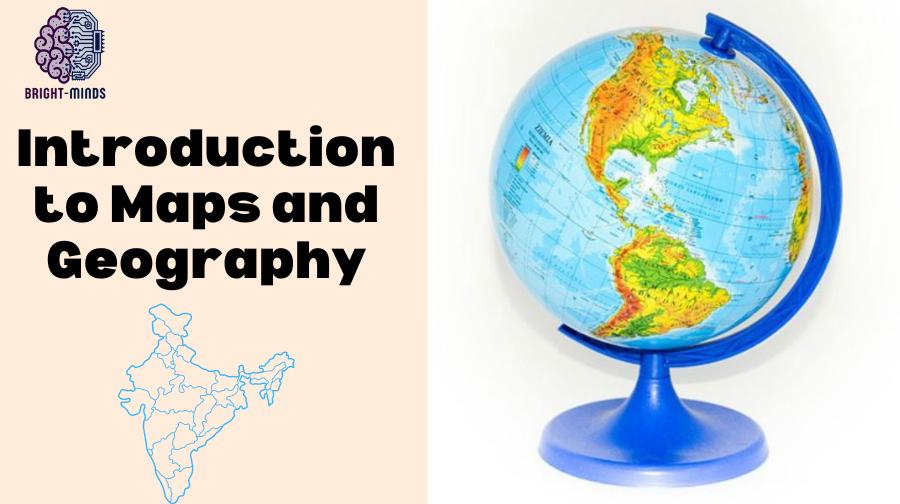
Geography is introduced in a simple and engaging way, helping young learners understand their physical surroundings and how to navigate them.
- Understanding Maps:
- What is a Map?: Maps are simplified representations of places. Children learn the basics of map reading, including identifying symbols, understanding directions (north, south, east, west), and interpreting simple maps like those of their classroom, home, or school.
- Activities: Drawing simple maps of familiar places, using a compass to understand directions, and identifying landmarks can make learning about maps interactive and fun.
- Introduction to Continents and Oceans:
- Global Perspective: Children are introduced to the world map, where they learn about the seven continents and five oceans. This helps them understand that the world is a vast place with different landforms and bodies of water.
- Activities: Puzzle maps, coloring activities, and watching educational videos about different continents and oceans can help solidify these concepts.
- Understanding Geography Through Local Context:
- Learning About Local Geography: Students start by exploring their immediate surroundings—neighborhoods, parks, and natural features like rivers and mountains. Understanding their local geography lays the foundation for learning about larger geographic concepts.
- Activities: Nature walks, creating models of local landscapes, and discussing how geography affects daily life can help make the subject more relatable.
Understanding Local History and Culture
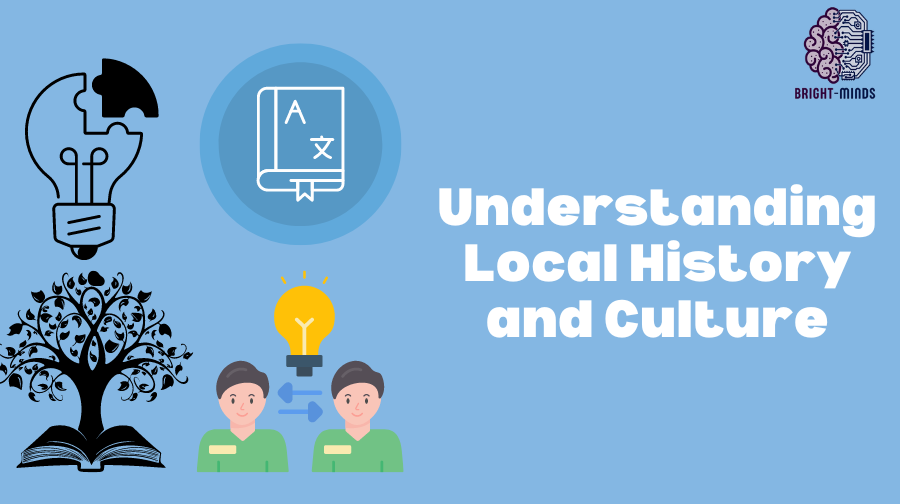
Local history and culture are essential elements of social studies, helping children connect with their heritage and understand the evolution of their community.
- Introduction to History:
- What is History?: Children learn that history is the study of the past. They are introduced to the idea that events, people, and places from the past have shaped the world they live in today.
- Activities: Visiting local historical sites, listening to stories from elders about the past, and creating timelines of significant events in their community or family history can make history tangible for young learners.
- Exploring Local History:
- Focusing on the Local Community: Children are taught about important historical events, landmarks, and figures from their local area. This might include learning about the founding of their town or city, significant cultural festivals, or local heroes.
- Activities: Field trips to museums, reenactments of historical events, and creating posters about local history can make these lessons more engaging.
- Appreciating Culture:
- Understanding Culture: Culture includes the traditions, customs, and arts of a community. Children learn about local cultural practices, including festivals, music, dance, and food. This helps them develop a sense of identity and pride in their heritage.
- Activities: Participating in cultural festivals, learning traditional dances or songs, and tasting traditional foods can bring culture to life in the classroom.
The Importance of Social Studies in Early Education
Social Studies in classes 1-3 is about more than just learning facts. It’s about helping children understand their place in the world, appreciate their heritage, and develop a sense of responsibility towards their community and environment. By starting with familiar concepts like family and community and gradually introducing more complex ideas like geography and history, social studies education builds a foundation for lifelong learning and active citizenship.
Conclusion
Introducing social studies at the pre-primary level is essential for developing well-rounded individuals who understand and appreciate the world around them. By focusing on the basic concepts of community, family, geography, and local history and culture, educators can create a curriculum that is engaging, educational, and impactful. This early exposure to social studies helps children build a sense of belonging and responsibility, fostering the skills and knowledge they need to become informed and active members of society.
you may be interested in this blog here:-
